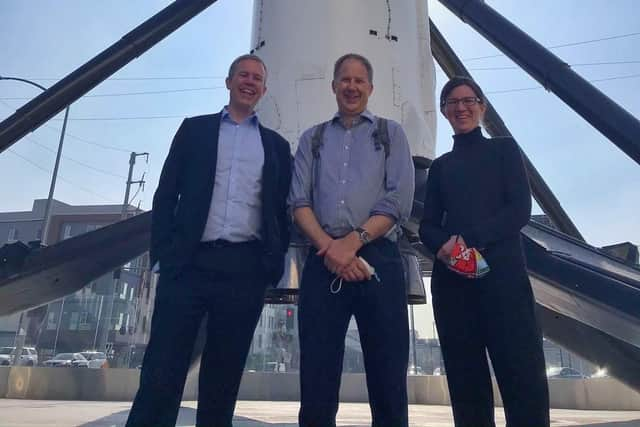Booming satellite market could see first Scottish spaceport rocket launches in 2023
Colin Macleod, a Stornoway-born former hill farm worker who went on to work in the nuclear and national security sectors, now heads a new 55-strong space regulation team at the Civil Aviation Authority (CAA), several members of whom are based north of the Border.
The CAA is already assessing a licence application from SaxaVord spaceport on Unst in Shetland and expects to also receive bids from the other Scottish sites, all of which apart from Prestwick are for vertical rocket launches. The authoiry conducted a consultation in November on the environmental impact of the SaxaVord plans, for the Lamba Ness peninsula on the most northerly of the Shetland islands.
Advertisement
Hide AdAdvertisement
Hide AdMr Macleod said: “I’m hoping the first Scottish licences will be by mid-2023, with the first orbital launch with a payload in late 2023 or 2024.


“The space sector in Scotland is very exciting. You need to be able to have the geography to launch satellites into the required orbit. The north of Scotland has got a really good position because it's quite high up on the planet. But the most important reason [favouring Scottish locations] is that it has got to be safe and there is not a risk of harm to the public."
Mr Macleod said safety was the priority in assessing spaceport licence applications. He said: “My primary job is protecting the public and the more remote, the easier it is to keep everyone safe, such as through exclusion zones. There's normally a circular zone around the vertical spaceport and then it fans out into a large triangular shape over the flight path, which is way bigger than is likely to be needed, but from a safety perspective that's what we do.
The size of the zone would depend on factors such as the rocket size and fuel, while options could include people being moved out during launches or mitigating measures such as barriers to protect buildings.
Mr Macleod said: "If the exclusion zone does include schools and houses, which would be unusual, they [spaceport operators] would be looking at taking the people out rather than doing other things. But the advantage of most of the Scottish sites is the geography means that's not such a problem as there isn't anyone around.


"The spaceports will have to work with the communities, including fishermen and others in the sea and the local area, and they will have the ability to possibly close roads and keep people away using fences or security." However, Mr Macleod added: "There’s not an expectation that rockets will be successful every time, and one in ten early rocket missions fail, but this does not matter if they can fail safely."
He said the widespread use of satellites, such as for maps in mobile phones and environmental research, meant it was a very buoyant market, with frequent launches elsewhere in the world driving down costs and the advent of reusable rockets, which could be launched ten or more times reducing them further.
Comments
Want to join the conversation? Please or to comment on this article.